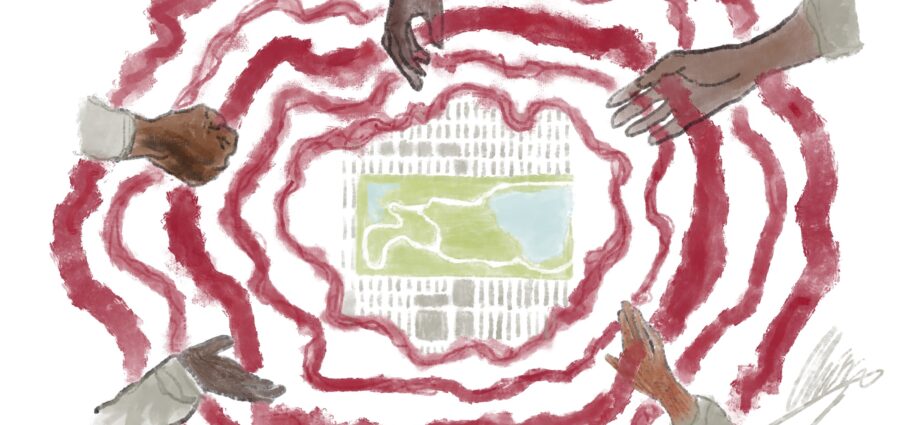By Amélie De Paepe
Police brutality. Racism. Racial profiling. Injustice. These are all words that resonate with the story of the Central Park Five. These five men allowed their story to be adapted to the screen in the Netflix series When They See Us.
Already the first episode is a shock, and I have to admit it was an effort to keep watching as I felt infuriated by what I was seeing. Other people I know had the same problem. Depressive dark lighting dominating the series and the overall cinematographic style did not help. If the series did not have a ‘where are they now’ ending, one could think it was just a very good plot for a well-narrated and constructed crime series. But this was reality. It still is reality. From the very beginning, we are thrown right into the action. Five unrelated stories converge in interrogation rooms through a complex narrative. The close-ups and shot-counter-shots during the interrogations oppress the viewer and force us into the action – just like a story is forced out of these boys who do not even know each other. The handheld camera movements and quick-paced editing add to the confusion and disbelief. Despite being minors, the boys are interrogated without their parents. They are bullied by police officers.
A dad shouts. A man shouts. A boy cries. A boy hurts. A boy wants to go home. And so, a boy lies.
The testimonies are built and filmed, connecting the boys, previously strangers to one another, in one ridiculous and incongruent story.
With the innocence of these young boys as a core theme, we watch the prosecution struggle to build up a narrative. The story, which for them is the truth, is one that will make the uptown New Yorkers happy. It is one of politics. In fact, the entire series bases itself on this: the conflict between justice and politics. A conflict that seems non-existent but that emphasises a dichotomy between ways of telling the story; showing that a narrative is all that is necessary. The final story laid out by the prosecution is full of gaps and blunders, and we feel that the case is won. However, the inevitable happens.
With a slideshow of the characters’ faces and a sad blow of the trumpet, the verdict is pronounced: “Guilty”. The words resonate as the diegetic music becomes non-diegetic and absorbs all the main and secondary characters; a mistake must have been made.
These boys will forever be boys, their teenage years stripped away from them. This is shown by the time-lapse which occurs in the third episode and in the emptiness which surrounds Korey Wise as he struggles through his last teenage years in an adult prison. They must be sick of having people write about them; sick of having for president the man who advocated for the return of the death penalty for their case. I wonder what they thought when the government handed them a check to compensate for the psychological and physical trauma they endured.
These injustices are still imperceptible, they are still not talked about enough, they are still perceived as normal. They should not even be an exception, but right now they are the rule. This crime series, based on true events, highlights prominent issues in society, ones that need to be addressed. Through a visual medium, it aims to shock and bring truth to the states’ lies and the imperfections of the institutions where people constantly slip through the cracks. It brings forward the importance of turning on a camera to film the injustice and denounce manipulated narratives.
Finally, to show how the narrative perspective can be twisted, one could compare this series to The People vs. O. J. Simpson. In this true-crime series, the narrative is contorted to opposite ends; despite a white-washed lifestyle, his race was the factor that, arguably, let him walk free. For the Central Park Five, it was what condemned them. This difference in outcomes emphasises the deep-rooted failures and perversion of the American justice system. It shows what happens when your social status determines your right to a fair trial and how much of a liability you are to the state.
Edited by Karolina Hajna
Artwork by Chira Tudoran

